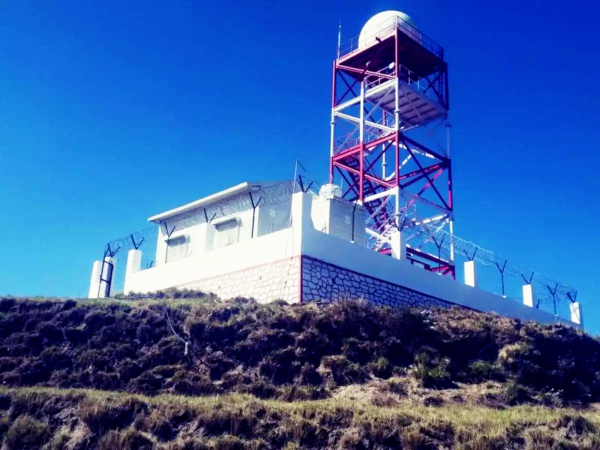NEW DELHI: Union earth sciences minister, Harsh Vardhan, on the occasion of the 146th foundation day of India Meteorological Department (IMD) on Friday, inaugurated two Doppler Weather Radars, one each at Mukteshwar in Uttarakhand and Kufri in Himachal Pradesh, which will provide valuable support to farmers and disaster managers in both the states, and to the pilgrims undertaking the pilgrimage to Kailash Manasarovar and Char Dham yatra.
The minister also launched the Multi-Mission Meteorological Data Receiving and Processing System of IMD in collaboration with ISRO (MMDRPS). This system is capable to process rapid scan data of INSAT-3DR Imager payload conducted during extreme weather events or cyclones resulting in better monitoring of such extreme weather events in real time.
Appreciating the IMD on the occasion for its farm advisory services which currently help 43 million farmers through weather related information suitable for agri operations, the ministry of earth sciences (MoES) secretary, Madhavan Rajeevan, said, “The advisories will cover 70 million farmers by 2022 and 100 million farmers by 2025.”
He said that the warning and advisory services were helping farmers and fishermen to improve their economy as found from a latest survey by National Centre for Applied Economic Research.
The IMD has target to expand its Agro-Meteorological Services from 2,300 blocks in 2020 to 7,000 blocks across the country in 2025.
Chief Minister of Uttarakhand, Trivendra Singh Rawat and Chief Minister of Himachal Pradesh, Jai Ram Thakur, also participated in the virtual launch even and spoke about importance of accurate and advance weather information for their states as they are largely dependent on agriculture and tourism.
Referring to the two Doppler Weather Radars, inaugurated at Mukteshwar and Kufri, the IMD said, “This indigenously built radars are shining examples of ‘Atmanirbhar Bharat’ and will play a vital role in providing information on the rapid development of severe weather events in the Central and Eastern region of Uttarakhand and Himachal Pradesh along with adjoining areas around with a nominal range of 100 Kms”.
These Radars will help in detection of severe weather associated with thunderstorms thus providing improved warnings, and better estimation of rainfall with detection of heavy rains and generation of warnings.
Highlighting that there has been significant improvement in forecast accuracy of various severe weather events including tropical cyclones, heavy rainfall, fog, heat wave, cold wave and thunderstorm, director general of the IMD, Mrutyunjay Mohapatra, said, “The accuracy has increased by about 15-40% for different severe weather events forecast during last five years. The thunderstorm warning is being provided for all districts and 894 cities and towns.”
On the Multi-Mission Meteorological Data Receiving and Processing System (MMDRPS), the IMD in a statement said the system has three dedicated earth station and data receiving system to receive data from currently operational Geostationary INSAT-3D, INSAT-3DR satellites and INSAT-3DS to be launched in year the 2021/2022.
“The MMDRPS system has around 32 high end servers and two-tier objective type storage of the capacity 2.0/2.0PB (Main/ Mirror) with 324TB solid state Drive (SSD) system, resulting to bring down the processing time from 20 minutes to 7 minutes. A provision has been made to carry out real time calibration of Infrared spectral band satellite data with international reference satellite data to improve the satellite data quality,” it said.
The MMRDPS system output will be utilized for monitoring of severe weather and many sectorial applications like defence services, disaster management, power sector, aviation, railway, tourism and agriculture.
Source: ToI
You may also like
-
Navigating India’s Skill Landscape
-
Trade Connect E-platform For Exports Is Single Window, Fast, Accessible And Transformational: Shri Piyush Goyal
-
India-us Working Together In Areas Like Critical Minerals, Supply Chains And Advanced Technologies: Shri Piyush Goyal
-
Cabinet Approves Health Coverage to All Senior Citizens of the Age 70 Years and Above Irrespective of Income
-
Cabinet Approves PM Electric Drive Revolution in Innovative Vehicle Enhancement (PM E-DRIVE) Scheme With An Outlay of ₹.10,900 Crore
